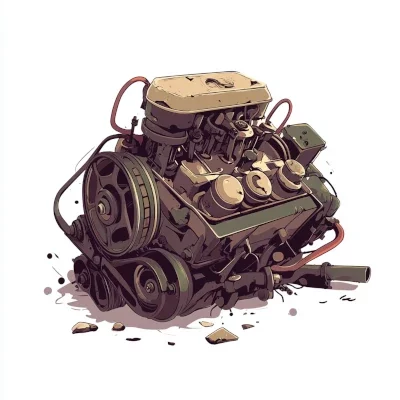The Rise and Stall of Idea Programs
What happened to your idea program ?
What once felt like an exciting engine of progress now feels like an old machine sputtering to keep up. And it started so well…

In the early days, submissions flooded in—brilliant, creative, problem-solving gems from every corner of the company and then the excitement faded and the ideas are now just a trickle.
This story is all too familiar for organizations embarking on transformation journeys. Idea programs—whether supported by cutting-edge software or simple suggestion boxes—are often launched with the best intentions. Leaders recognize the untapped potential in their teams, and employees, initially energized by the opportunity, jump in enthusiastically. But without proper care and attention, these programs can stagnate, leaving participants disheartened and leaders wondering, What went wrong?
In this article, we’ll explore the common pitfalls that can lead to your idea program stalling and provide actionable strategies to revitalize your program. Whether you’re a business transformation lead, a Continuous Improvement proponent, or a Chief Transformation Officer overseeing sweeping changes, understanding the human dynamics behind innovation is crucial.
After all, unlocking the potential of your team is as much about psychology as it is about process.
1: Preventing Idea Program Fatigue
Think of your idea program as a garden. It needs to be nurtured—if the weeds of neglect creep in or the soil of enthusiasm dries up—the blooms fade.

Suggestions to prevent idea fatigue
A: Follow-up on suggestions
When employees take the time to submit ideas and hear nothing back—no acknowledgment, no feedback, no implementation—the message is clear: Your effort doesn’t matter.
We recall working with a mining company that launched an idea platform with great fanfare and which successfully generated 300 ideas in the first 4 weeks. However six months in, they still had a backlog of 200 unreviewed submissions. Participation in the idea platform plummeted – not surprisingly – grinding to a stop.
The solution was simple – leadership implemented a transparent tracking system, updating employees weekly on the status of their ideas. Almost overnight, morale and employee engagement lifted again and submissions restarted.
B: Make the Submission process simple
If you’ve made your idea submission process overly complicated, employees will simply give up trying to use the process.
Whether it’s a confusing interface, too many forms, or unclear expectations, friction discourages participation.
So make it simple!
C: Focus on key priorities
People lose confidence in the program’s impact when the ideas, whilst plentiful, do not actually address the critical issues the organization is facing.
This is where clear communication becomes essential – both in ensuring employees actually know what the organization’s priorities are and also feedback given to employees after ideas have been submitted.
Feedback needs to be given about whether the idea fits into the strategic priorities of the organization or not. In other words, is the idea seen as high priority ?
An additional approach is to enable the employee use specific keywords or tags (e.g., “safety”, “bottleneck” or “cost efficiency”) when describing and sharing ideas. This enables employees to recognize if their ideas align with the organization’s priorities.
Questions to ask yourself:
- How are you currently acknowledging and acting on submitted ideas?
- Is your submission process intuitive and accessible?
- Are your employees aware of the impact their ideas have on organizational goals?
By addressing these foundational issues, leaders can transform a struggling idea program into a vibrant hub of creativity and engagement. Up next, we’ll dive into how to overcome the saturation problem and prioritize what truly matters.
2: Overcoming being flooded
When idea programs first launch, they often experience a flood of submissions. Leaders can quickly become overwhelmed by the sheer volume and nothing gets implemented.

Over time, this flood of ideas that leads nowhere can end up frustrating both the reviewers and the submitters and eventually kill the entire ideas program.
How do you manage the flood without dampening enthusiasm? The answer lies in filtering, prioritizing, and focusing on the best ideas to implement.
Suggestions to overcome being flooded
A: Categorize Ideas
Imagine trying to fill a library with books but having no system to decide what goes on the shelves. Without criteria, you’d end up with chaos. The same is true for idea programs. How do you categorize ideas ?
A common approach is to use simple keywords or tags to classify ideas (e.g., “Safety”, “Cost efficiency”). Employees submitting ideas can then choose which keywords apply.
Now you have a means of easily seeing all ideas associated with a key theme or strategic priority e.g., safety.
B: Define the Value and Ease of an Idea
Not all ideas are equal. Some ideas have more value but may be more costly or harder to implement.
You need a simple way of recognising the value of an idea – that is easily applied and recognised.
A common way of doing this is to give an idea a ‘value’ score and an ‘ease’ score – commonly on a scale of 1 to 5.
A ‘value’ score of 5 indicates very high value – conversely, 1 indicates very low value.
Similarly, an ‘ease’ score of 5 indicates that the idea is very easy to implement (is low effort, will be fast to implement and not require significant capex).
Now you have a simple system that can instantly tell which are the high value ideas and potentially ‘easy’ to implement.
Whilst the ‘value-ease’ scores are subjective, the system is simple and can handle different categories of ideas. For example, the system can be used for both safety and cost ideas.
C: Use Technology to Sort, Filter and Retrieve Ideas
Modern idea management software can be a game-changer for dealing with saturation.
Once you have the right inputs for your data (consistent classification means and value), you can use technology to easily sort, filter and retrieve ideas from your ‘bank’ of ideas. You’ve transformed your ideas bank from a chaotic sea of ideas where all ideas are equal and difficult if not impossible to group to something that can be easily searched.
Now your leadership team can easily respond to high priority ideas aligned to your organization’s strategic priorities.
Questions to ask yourself:
- Does your idea system allow you to categorize or group ideas ?
- Do you have a system in place to evaluate and prioritize ideas effectively?
- How are you leveraging technology to streamline the idea review process?
Whilst categorizing ideas allows you to easily see the most valuable ideas that align with your current priorities and respond quickly and avoid your program stalling – please remember you also need to respond to every idea whatever the value so that every submission feels valued and impactful. Next, let’s explore the role of incentives and recognition in overcoming idea submission fatigue.
3: The Role of Incentives and Recognition
Employee idea programs thrive not just on participation but on meaningful engagement. While a sense of intrinsic motivation often drives initial submissions, sustaining momentum requires a balance of tangible rewards and heartfelt recognition. After all, when employees feel their contributions are valued, they’re far more likely to keep contributing.

Suggestions for incentives and recognition
A: Incentives That Go Beyond Monetary Rewards
Think of incentives as the spark that reignites enthusiasm. While monetary rewards can be effective, they’re not the only—nor always the best—way to motivate.
Recognition can be an equally high motivator – being widely recognized for a worthwhile contribution to the workplace can be just as motivating as a monetary reward.
And, it can be a combination of recognition and reward. For example, at one client I worked for, contributions were recognized by the GM or Manager and we also introduced movie tickets and dinner vouchers at a local restaurant as a reward (the employee could choose which reward they preferred) – enabling an employee to share their reward with a partner.
Examples:
- Public recognition (e.g., a spotlight in a company newsletter or town hall).
- Exclusive access to workshops, leadership training, or mentorship programs.
- Team celebrations for successfully implemented ideas.
B: Create a Culture of Recognition
Recognition isn’t just about awarding the best ideas; it’s about fostering an environment where every effort is acknowledged. A simple “thank you” or a mention in a team meeting can make a world of difference.
Consider using “Recognition” wall show casing ideas that have been implemented – alongside the employee’s name and photo. Let employees take pride in seeing their contributions celebrated.
Key Elements of a Recognition Strategy:
- Acknowledgment at all levels: Ensure that even ideas that aren’t implemented receive positive feedback.
- Peer-to-peer recognition: Allow colleagues to “upvote” or comment on ideas, building a sense of camaraderie.
- Leadership engagement: Senior leaders should actively participate in recognizing and celebrating employee contributions.
C: Close the Feedback Loop
A lack of follow-up is one of the quickest ways to demotivate employees. Even when ideas aren’t adopted, providing constructive feedback can help maintain trust and encourage future participation.
And remember, constructive feedback is a coaching opportunity. Give employees useful feedback on the ideas and they will be able to take that on board when contributing further ideas. Not giving any feedback guarantees no further contribution at all.
Questions to ask yourself:
- Are your current incentives meaningful and aligned with employee values?
- How do you recognize contributions at all stages of the idea process?
- What feedback mechanisms are in place to ensure transparency?
By weaving meaningful incentives and recognition into your idea program, you can transform it from a transactional process into a thriving, dynamic ecosystem of innovation. Next, we’ll explore how technology can play a pivotal role in keeping the program running smoothly and effectively.
4: Leveraging Technology to Streamline and Sustain Engagement
Technology isn’t just a tool—it’s the backbone of a thriving, modern idea program. Long gone are the days of an empty suggestion box sitting in the corner of an office or shopfloor.

From simplifying the submission process to tracking progress and providing feedback, the right software can eliminate bottlenecks, foster transparency, and sustain long-term engagement.
Suggestions to leverage technology
A: Simplify Submission and Tracking
The first step in revitalizing your idea program is ensuring the submission process is intuitive and user-friendly. Employees should feel like submitting an idea is as easy as sending a quick text or snapping a photo.
A simple app-based idea management system allows employees to submit easily ideas on the go; even better if they can attach images to illustrate their concepts.
Beyond submissions, transparency in tracking is crucial. Employees should be able to see where the status of their idea after it’s been shared. Has it been reviewed ? is it being implemented ? Transparency is needed to build trust and keeps employees invested.
B: Use Data to Identify Trends and Measure Success
Modern idea management platforms come equipped with analytics that can reveal valuable insights. What types of ideas are trending? Which departments or teams are the most engaged? What’s the average turnaround time for idea evaluation?
If you can visibly see success in a department or team, you can both recognize the achievements of that team and also use that department or team’s approach in other areas of the organization.
Metrics to Track:
- Participation rates over time.
- Idea implementation rates.
- Employee satisfaction scores related to the program.
C: Enable Collaboration Through Technology
Collaboration is key to transforming good ideas into great ones. Platforms that allow employees to comment, refine, and vote on ideas foster a sense of community and ownership.
Questions to ask yourself:
- Is your current technology user-friendly and accessible to all employees?
- Are you leveraging data to understand and improve your idea program?
- How does your platform encourage collaboration and transparency?
By integrating the right technology, you can address many of the challenges that lead to idea submission fatigue, ensuring your program remains efficient, engaging, and impactful.
Conclusion: Revitalize, Engage, and Transform
Idea programs are not a one-and-done initiative—they are living systems that require constant care, attention, and adaptation. By understanding the causes of idea fatigue, streamlining the process, recognizing contributions, and leveraging technology, you can turn a stagnant program into a thriving innovation engine.
Final Thought: “Employee ideas are the seeds of transformation. With the right tools and strategies, you can nurture those seeds into a forest of innovation that drives sustainable success for your organization.”
